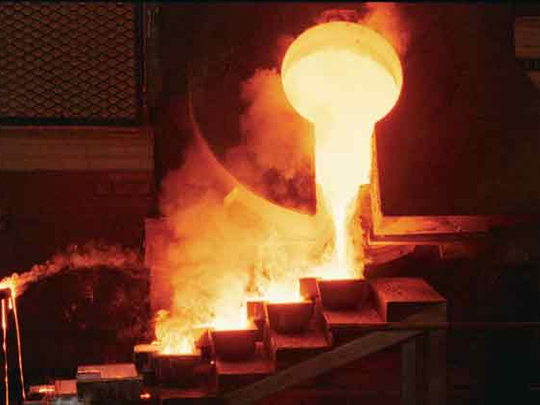
For more than a century after the 1886 gold rush in the Witwatersrand Basin, South Africa was able to lay claim to being the world’s top gold producer. At its peak in 1970, it produced 1,000 tonnes or 80 per cent of global production and the precious metal helped develop Africa’s largest and most advanced economy.
These days, gold miners face an altogether different rush — a race to stem the mature sector’s decline and ensure its viability. As the mines have become deeper, they are harder to operate and the quality of many deposits is reduced, causing production to halve to about 200 tonnes over the past decade. South Africa is now the fifth-largest producer, behind such nations as China and Australia.
The decline looks set to continue unless mining houses can increase productivity and develop technologies to mine deeper and more difficult areas, while also improving safety. “If we don’t improve our productivity we don’t have a future,” says Mark Cutifani, chief executive of AngloGold Ashanti. “We can be a dynamic part of the industry, but it’s going to require a whole range of new thinking.”
Currently, miners in South Africa work about 270 days of the year because of holidays, compared to all year round in other countries. And with deeper mines — AngloGold’s are the world’s deepest at 4km beneath the surface — it can take up to two hours for workers just to reach the drill site.
These factors mean that deeper South African gold mines can produce 40 per cent less a year than their peers. AngloGold, the world’s third biggest gold producer, has seen its annual South Africa production decline from two million ounces three years ago to about 1.7 million and predicts a further decline to 1.2 million ounces in five years if new methods are not introduced.
To reverse the decline, the company is working with groups such as General Electric and Siemens to automate the mining process. It is spending about $50 million (about Dh183 million) a year on research and development and hopes to deploy a prototype “long drill” by 2014 so work can be carried out from main tunnels. If the attempt proves successful, the company could extract another 70 million ounces from existing mines and go as deep as 5km. “We still have 20 to 30 years,” Cutifani says. “What we are trying to do is create another 50 to 100 years.”
There is already one example of new mechanised gold mining in South Africa — South Deep mine. Gold Fields, which has seen its South African production decline by about half over the past ten years to 1.7 million ounces a year, is investing $1 billion to develop the mine to increase production at South Deep from about 270,000 ounces a year to 750,000 ounces by the end of 2015. The company has spent more than ZAR200 million (about Dh93 million) on research and development in recent years, and believes it can help boost production by operating in previously mined resources or tailings.
High gold prices have provided a significant fillip to miners and made projects more viable. Cutifani says companies need a price of $1,650 a troy ounce to hold production at current levels, while forecasting the price to average $1,700 to $1,800 this year.
— Financial Times







